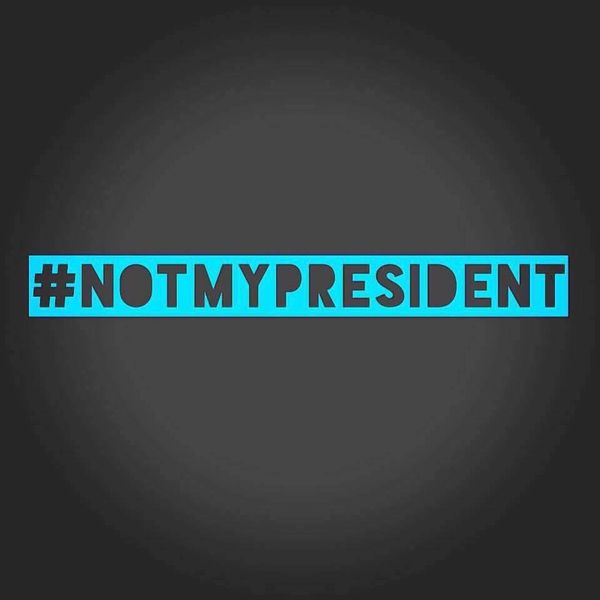Woohoo! A woman is the presumptive Democratic presidential nominee! We have achieved gender equality!
Hahaha. Not so fast.
A milestone nonetheless, at her New York primary victory speech, Hillary spoke of income equality, job creation and retirement security. Yet these democratic ideals were not the focus of her viewers. Instead, they were concerned about ... her clothes.
Yes. You read that right. Hillary's speech created a subsequent internet uproar over the jacket she sported during the speech. She gave her speech in a $12,495 Giorgio Armani tweed jacket, and many viewers were quick to point out the irony of her fashion choice.
Many argue that Hillary's attempt to assert herself as an "everywoman," or as a "people's person" ultimately failed because while waxing poetic promises for equality, she was wearing a jacket that only "the 1 percent" could afford to buy.
There are those who argue that Clinton's attire is out-of-touch with the message she is trying to convey, that she is operating the tenets of her campaign trail merely in theory, rather than in practice. But I don't think it's as simple as that.
Let's harken back to the earlier days of Hillary's highly-publicized political career. While she served as Secretary of State from 2009 to 2013, people made such a mockery of her multi-colored pantsuits that they became a meme. The last time she campaigned for the presidency, she was unsuccessful. And although we don't like to admit it, any political strategist or political consultant will tell you that a major component of running a successful campaign is the candidate's image — and that has a lot to do with their clothes.
So, why such a critical focus on Clinton's wardrobe?
In my opinion, the continual focus on Hillary Clinton's clothing, as opposed to the messages she is trying to convey and the changes she is trying to put into effect, epitomizes the idea that as the first female presumptive presidential nominee, Hillary has only begun to scratch the mere surface of the glass ceiling. Back when she was busy handling our country's foreign affairs as Secretary of State, she attempted to assert herself in the male-dominated political sphere by opting for the "power pantsuit." Yet she repeatedly faced criticism for not being "feminine enough." Now, she has adopted a notably more fashion-forward aesthetic for her campaign, yet voters choose to focus on the fact that her expensive, more traditionally feminine attire is now in conflict with her messages and ideals.
Can Clinton catch a break? Can women in politics, or for that matter women in any male-dominated profession, catch a break? It seems that a feminine-presenting woman in a traditionally male-dominated field has two options, neither of which are ideal. She can either a) surrender her femininity in an attempt to equalize herself to the men around her, and face criticism for being "too hard" or "too shrewd," or b) she can attempt to assert her femininity alongside her abilities and accomplishments, only to have her fashion, makeup or hair choices picked apart and used as a crucible for discussing her incompetence.
Now, this is not to say that Clinton should not be scrutinized. I believe that regardless of gender, we should not hesitate to scrutinize our political leaders so that we may determine who is truly the best candidate for the job. But this critical questioning should not be a segue from a conversation about the candidate's clothing. If you believe that Hillary Clinton is truly a poor candidate for the sake of economic equality, that is fine. But if you are going to set out to prove it, find conflicting statements she has made in her speeches. Find evidence from her previous voting habits as a Senator. Do not attack her fashion choices, because Clinton is already in an unprecedented place as a woman running for president; the harsh reality is that looking "good" is even more crucial to her success because she is a woman, and as such she is expected to look 100 percent put-together, polished and pretty even while she is doing the hardest job in the world.
Case in point: nobody really cares that Obama has gone completely gray-haired from doing the job for eight years, yet Hillary is already being lambasted for her appearance on the campaign trail. And if you still want to use a candidate's fashion choices to prove that they are not suited to promote equality (no pun intended), then at least treat all the candidates equally on that front. Donald Trump has a penchant for Brioni suits (nypost.com), which cost upwards of $6,000 per suit, yet no one uses that in their defense of why Trump would make a bad president.
Think about how the media has treated Michelle Obama over the past eight years. She has led countless efforts against poverty and childhood obesity, and she is a strong proponent of increasing the quality of education. Yet no celebration of her philanthropic efforts goes without mention of her great arms, or her impeccable sense of style. This is what I like to call the Audrey Hepburn effect: when a woman has put so much of herself into contributing to countless worthy charitable causes, but all we remember about her is that she looked so good doing it.
Fashion choices should be meaningless in positions of power. Really, unless you work in fashion design or at a fashion magazine, the fashionability of your attire should not matter. However, it is clear that because she is a woman, Hillary Clinton's fashion choices must have meaning, whereas her male counterparts can go on wearing their several thousand dollar suits without anyone noticing or caring. Hillary Clinton's clinching of the nomination shows that women have made big strides. But this backlash shows that we still have a lot of fighting left to do.






















